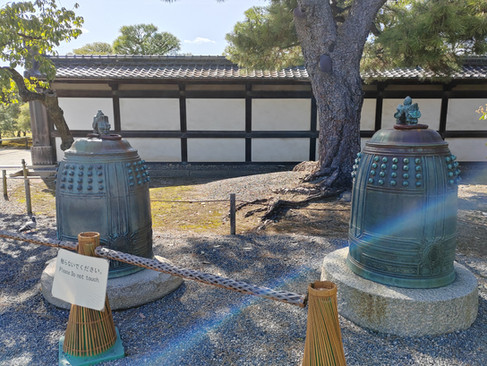Nijo Castle, Kyoto
- lifeofandra

- May 27, 2024
- 3 min read

Nijo Castle was the Kyoto Residence of the Shogun during the Tokugawa Era (1603-1867) and served as the Imperial Palace after the Shogunate fell.
Nijo-jo (二条城) was built in 1603 and is a World Heritage Site.
Opening Times & Admission
Open 8.45 am to 4 pm, daily.
Palace Grounds are closed from the 29th to the 31st of December.
The Ninomaru-goten Palace is closed on Tuesdays in January, July, August and December, from the 26th to the 28th of December and from the 1st to the 3rd of January.
Admission is 800 Yen for the Castle grounds and 500 Yen for the Ninomaru Palace.
You can purchase the tickets at the ticket window on site, or online, via their website.

How to get there
From Kyoto Station, you can opt for the JR San In Line to Nijo Station (4 minutes, 190 yen) from which you need to walk for around 15 minutes, or take the City Bus 9 or 50 to Nijojo-mae (16 minutes, 10 stops, 230 yen).
Address: 541 Nijojocho, Nakagyo Ward, Kyoto, 604-8301, Japan

Higashi Otemon (East Gate)

As you enter the castle grounds, the first structure you will see is the East Gate. Higashi Otemon dates from 1662 and is the main gate to Nijo Castle.
Kara-mon Gate

After walking through the East Gate, if you turn slightly left then walk straight ahead (see map above), you will find the entrance to the Ninomaru-goten Palace - the beautiful Karamon Gate.
Ninomaru-goten Palace
The palace has 6 connected buildings divided into 33 rooms, most of which are beautifully decorated with Kano School Paintings.
Filming and photography are prohibited inside this palace, so unfortunately I can't show you how beautiful it looks inside, but I can promise you it's worth a visit.
Hanging bells
As you exit the Ninomaru-goten Palace, you will see, on the right-hand side, two giant bells which were used during the Edo Period.
Ninomaru Garden

The Ninomaru Garden was designed in a Shoin-zukuri (traditional Japanese) style and it dates from 1626. One can easily spend hours admiring the simplicity and beauty of its design.

Honmaru Garden

From the Ninomaru Garden, I crossed the Honmaru East Bridge, reaching the Honmaru Garden and the Honmaru-goten Palace, the latter of which was under repair at the time of my visit.
The garden was reconstructed in 1896, under the Meiji Emperor's supervision.
The KeepTower
The base of the keep tower is all that's left from once used to be a 5-storey building. It burnt down in 1750 after being struck by lightning and was never rebuilt.
The remaining structure isn't necessarily spectacular, but it does offer great views of the Gardens and Palace.
The Southwest Tower

After enjoying the view from the keep tower, I crossed the Honmaru West Bridge and made my way to the Cherry Tree Grove and the Plum Tree Grove.
In the far corner, I could see the Southwest Watchtower. This, along with the Southeast Watchtower survived the 1788 fire which destroyed many of the castle's watchtowers.
Sakura
Nijo Castle is high on my list of 'Places to visit in Kyoto' regardless of the season.
However, if you happen to be in Kyoto during the Cherry Blossom Season (end of March - beginning of April), please make sure to add Nijojo Castle to your Hanami list. It's a fantastic spot!

If you like this post or found it useful or entertaining, please click on the little heart below.
I hope life is treating you well.
Take care.



































